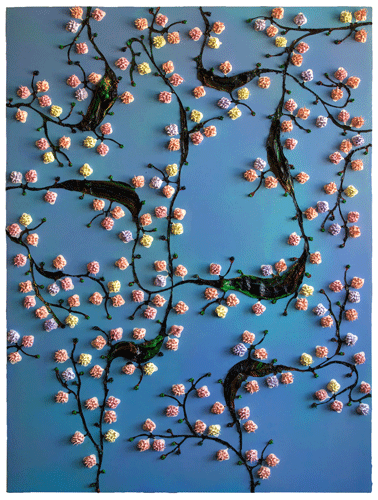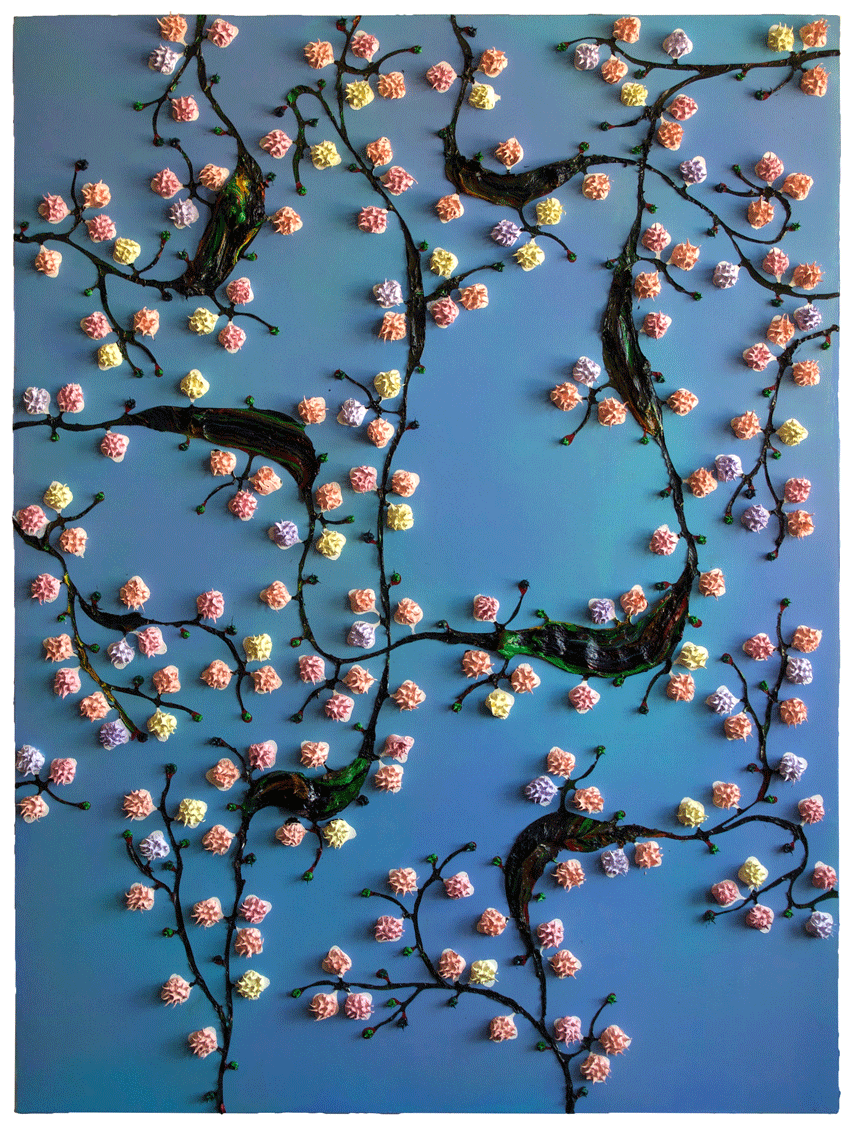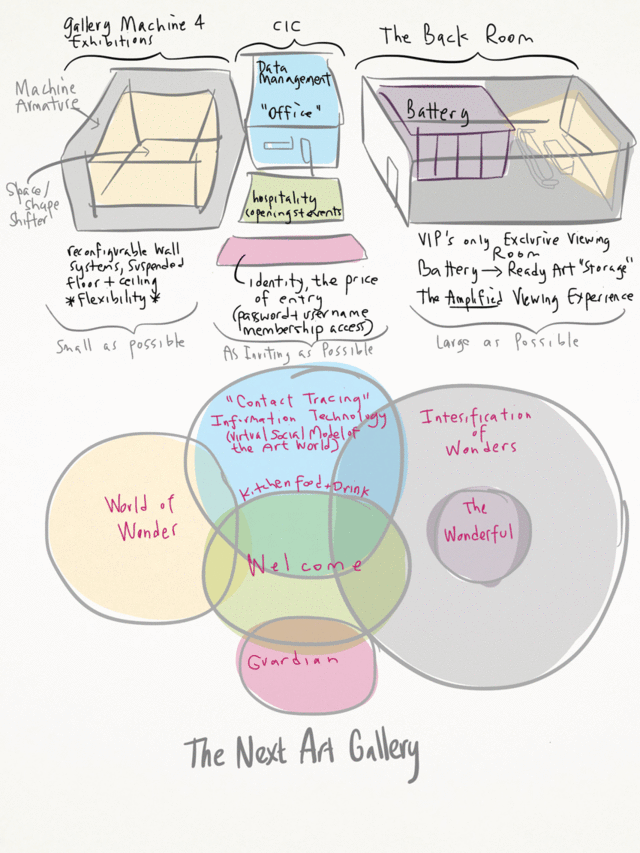July 28, 2020
Alfie
A quick search for the term "love" in my blog will show my abiding argument that what the art world now needs is a restoration of this motive.
I remember a moment in the Golden Age of LA's Chinatown art world in the late 90's and early aughts. Friends were playing music in one of our studios, and I jumped in to see what I could contribute. I possess no musical skill, by the way. I sang the song Alfie by Burt Bacharach. Given my context, it was a tone deaf selection, but then I intuited that the lyrics were more than poignant, they seemed to go to the heart of what I dimly perceived then and strongly now, to be a growing problem in our world, art and otherwise.
What's it all about, Alfie?
Is it just for the moment we live?
What's it all about when you sort it out, Alfie?
Are we meant to take more than we give
Or are we meant to be kind?And if only fools are kind, Alfie
I believe in love, Alfie
Then I guess it's wise to be cruel
And if life belongs only to the strong, Alfie
What will you lend on an old golden rule?
As sure as I believe there's a heaven above, Alfie
I know there's something much more
Something even non-believers can believe in
Without true love we just exist, Alfie
Until you find the love you've missed you're nothing, Alfie
When you walk let your heart lead the way
And you'll find love any day, Alfie
Alfie ...
July 13, 2020
ice upon a deep ocean

ice upon a deep ocean
2020
#597
48" x 36"
Oil on Canvas over Wood Panel

July 10, 2020
The New Normal Gallery
What would a new design criteria for a gallery look like in the "New Normal"?
The question of what will remain or will be regenerated of our art world in the wake of the worldwide pandemic will not be fully answered until the opening of the coming Fall season. There are a flurry of writing chewing the fat of this issue, here are two worth looking over.
Taylor Dafoe wrote an article in ArtNet in anticipation of NYC's phase 3 aperture this week, allowing galleries to open in the city: New York's Galleries Are Preparing to Reopen to an Uncertain Art Market This Week. Will Anyone Show Up? Caution is the watchword, hand sanitizers and scheduled appointments seem to be the order of the day. Interestingly, there was a mention of asking every gallery visitor to register their identity upon entrance, for purposes of facilitating contact tracing.
Barry Schwabsky weighed in with a mediation on the future of the gallery system post COVID-19: What Are Art Galleries For? No conclusions were arrived at in his article, he let the question hang heavy in the air.
There will be more friction to view art in galleries in the months to come. With the lingering super abundance of caution gripping the world, it's probable that there will be a timed-entry basis for museums and gallery openings, and now doubt this will reduce the population of willing art viewers. Reports are arriving now about museum layoffs and similar effects in other associated institutions. One such institution is the contemporary art fair. Many art fairs have cancelled or moving their schedules, the repercussions of social distancing remains to be seen and there are a few art observers who are already anticipating structural changes to this sector.
Art Fairs have been increasingly regarded in several quarters of the art world as an odious symbol of the pre-COVID NeoLiberal era. Basically, the art world was running on an old 90's model as the Fairs and auction houses altered the landscape in the first two decades of the subsequent century. A flood in the population of artists and the evaporation of the influence of criticism added to the mix. The idea of value became muddled and art became seen as a fungible form of money when it wasn't seen alternatively as an irrelevance. That the art fair arrogates collector attention from the local habitat of the gallery to one place and time, this is natural to its' design. That there have been an explosion of art fairs worldwide, pushing event calendars past the seasonal towards nearly every month means not only that galleries are obliged to hit the road at an exhausting tempo but more importantly, local knowledge of art by collectors has evaporated. What is lost in the process is more than knowledge but also intimacy, commitment and love between what artists make/think and what collectors collect. Now that the behemoth of the art industry as exemplified as the art fair system has had a spanner thrown into its gears, the moment is now for galleries to rethink how they present art and possibly recover their audiences again... before the art fairs do.
I've written elsewhere in this weblog about the need for the restoration of love in the our art world. The topic of this post is another way to talk about re-centering our regard for value. I am referring to this -perhaps obliquely during studio visits with fellow artists, when I ask "...where do you think we are in art history and where do you think we are going?" I'm looking for an art that is not about churning out more stuff, but instead imbued with purpose and vision that has a regard for the grandeur all that art has become to this moment. We need every player in the art scene today moving forward to find motivation in an intensity of the regard, another word for love. Collectors should consider themselves as expressive with their collections as artists are with their art materials. Galleries should do likewise demonstrating their behavior as a model for collectors, presenting artists that they not only believe in but also invest in as well. Skin in the game. Value is the measure of the unwillingness to part with something. Price in the market is the degree that unwillingness is overcome. Yes, the juxtaposition of these two ideas are paradoxical. The antonym of this particular paradox is mediocrity, the commonplace, another way to describe the state of art world after the manifestation of zombie art.
So, how could this impact the schematic design of a gallery?
The entrance.
Something that is precious will be guarded carefully. Access should be therefore controlled and vetted. Like members only websites, it is at least feasible that gallery visitors could register to enter, providing usernames and passwords to enter. It's interesting that Taylor Dafoe reported in the ArtNet article above that galleries will be asking for information to conduct contact tracing. It seems that this idea is in the air already. Sign in books have long been a matter of course in galleries worldwide. It's a small shift from voluntary to a requested sign in. Managing this data could be quite a valuable aid in getting to know who the gallery audience is and how it could or should be grown, a level of analysis yet untapped in the art world but commonplace elsewhere. At least until the pandemic passes, the open door policy of the past will not be possible. No doubt many galleries are thinking about how to manage exhibition openings. Should there be more than one, perhaps a week long series of nights of calibrated populations? Such a distribution would inevitably be ranked from VIP's to lesser VIP's. Whatever develops, it's not far fetched to imagine that access to art viewing will not be what it was.
Constricted access could be compensated with longer exhibition runs. Before the pandemic, galleries were already tilting towards extended calendars since the art fairs had hoarded all of the attention, luring the collector community into a singular time and place. Concerns about the expense of travel, transport, the sheer material needed for convention spaces are important but little attention was paid to the deleterious effects on local gallery collector audiences. The question of how global art fairs will recover is open for at least another year, but in the meantime galleries will have a chance to present a more attractive alternative.
The reception.
The reception space should be pointedly hospitable. Long ago, galleries used to provide food and drink a la the classic German gallery model as a matter of course. It is interesting that this custom had faded into the years that art became a brute commodity to be sold and as fast as it is forgotten. Hospitality can take a range of forms and the field of experimentation is wide. Refreshments are only one dimension, public speaking is another. Already, round table discussions have been sporadically hosted and once in a while a welcoming expression of gratitude and introduction to the art work on hand can end with toasts and applause. These grace notes point to value in art in presentation, an inculcation of the notion of the possibility if not probability of pricelessness.
The exhibition.
Front room and back room, this is the general parti of galleries since their inception. Public space and private space. The former has taken many forms, usually signaling the image of the museum at one degree or the other. The latter usually has been offices and storage, usually an afterthought. What could happen if more thought was invested in both? What if the backroom could be supercharged? Something that is precious will be guarded carefully. The back room should be the place where precious objects are guarded and lavished with jealous attention for the select few who would barter for possession. Dark walls, focused lights in framed spots on the priceless. Carefully designed storage racks that allow ready access at hand and guard the condition of the objects. A sofa, chairs, coffee tables, refreshing beverages to assist extending viewing. This is the atmosphere of value.
With the front room and back room in this general parti, the back room is amplified and the front room is condensed and intensified. The gallery proper should be singular and ready for any installation. It should be smaller than the current convention, and just big enough to deliver a precise impact. Tighten the aperture and fluid velocity increases. I've been fantasizing about the exhibition space as a theatrical machine, a deus ex machina delivering the denouement. With the floors, walls and ceilings floating, they can be built and rebuilt ready for any reconfiguration.
The underlying drive in this blogpost is the desire to restore love in the art world. Value in art has been increasingly questionable during the first decades of this century. We can't ask a collector to invest not only their money but their psyche into art unless galleries do it too. Some artists do this but not all. This means that galleries must become more like collectors, guarding works they deem priceless until paradoxically, price overcomes it.
July 6, 2020
Ecclesiastes
1. Remember now thy Creator in the days of thy youth, while the evil days come not, nor the years draw nigh, when thou shalt say, I have no pleasure in them;2 While the sun, or the light, or the moon, or the stars, be not darkened, nor the clouds return after the rain:
3 In the day when the keepers of the house shall tremble, and the strong men shall bow themselves, and the grinders cease because they are few, and those that look out of the windows be darkened,
4 And the doors shall be shut in the streets, when the sound of the grinding is low, and he shall rise up at the voice of the bird, and all the daughters of musick shall be brought low;
5 Also when they shall be afraid of that which is high, and fears shall be in the way, and the almond tree shall flourish, and the grasshopper shall be a burden, and desire shall fail: because man goeth to his long home, and the mourners go about the streets:
6 Or ever the silver cord be loosed, or the golden bowl be broken, or the pitcher be broken at the fountain, or the wheel broken at the cistern.
7 Then shall the dust return to the earth as it was: and the spirit shall return unto God who gave it.
8 Vanity of vanities, saith the preacher; all is vanity.
9 And moreover, because the preacher was wise, he still taught the people knowledge; yea, he gave good heed, and sought out, and set in order many proverbs.
10 The preacher sought to find out acceptable words: and that which was written was upright, even words of truth.
11 The words of the wise are as goads, and as nails fastened by the masters of assemblies, which are given from one shepherd.
12 And further, by these, my son, be admonished: of making many books there is no end; and much study is a weariness of the flesh.
13 Let us hear the conclusion of the whole matter: Fear God, and keep his commandments: for this is the whole duty of man.
14 For God shall bring every work into judgment, with every secret thing, whether it be good, or whether it be evil.

